We included HMH Into Math Grade 4 Answer Key PDF Module 20 Lesson 3 Compare Metric Units of Mass and Liquid Volume to make students experts in learning maths.
HMH Into Math Grade 4 Module 20 Lesson 3 Answer Key Compare Metric Units of Mass and Liquid Volume
I Can represent and compare measurements given in different metric units of mass and liquid volume.
Spark Your Learning
Emma has a water bottle in her backpack. Emma does not know how much liquid her water bottle can hold.
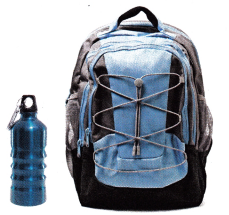
How could you find the liquid volume of the water bottle?
Answer:
Turn and Talk Think about the metric unit of liquid volume that you know, the liter. What objects are measured in liters? How do you think a liter compares with the size of the water bottle?
Answer:
Build Understanding
Question 1.
Emma also has a button and her math book in her backpack. Use these objects to describe the relative sizes of milligrams, grams, and kilograms.
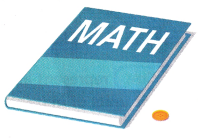
A. Which object is heavier?
Answer:
Math book is heavier.
B. The button has a mass of 1 gram. The math book has a mass of 1 kilogram. Which unit ¡s greater, a gram or a kilogram?
Answer:
Kilogram is greater than gram.
C. There are 1,000 grams in 1 kilogram. How many buttons would it take to equal the mass of the math book?
Answer:
The button has a mass of 1 gram. The math book has a mass of 1 kilogram.
There are 1,000 grams in 1 kilogram.
1 x 1,000 = 1,000 buttons
1,000 buttons are equal to the mass of the math book.
D. There is a metric unit of mass even smaller than the gram called a milligram. There are 1,000 milligrams in 1 gram. How does the size of a milligram compare with the size of a kilogram?
Answer:
We know that 1,000 milligrams in 1 gram and 1,000 grams in 1 kilogram.
There are 1,000,000 milligrams in a kilogram.
Draw a visual model that you could use to compare the sizes of 1 milligram. 1 gram, and 1 kilogram.
Answer:
Turn and Talk Emma also has a dictionary in her backpack. If you measured the mass of the dictionary in milligrams, grams, and kilograms, how would the masses compare? Which unit would be the best to use?
Answer:
Step It Out
Question 2.
Mr. Li orders a case of blue paint for the school art project. The case contains 100 bottles of blue paint like this one. Mr. Li also orders five l-liter bottles of green paint. Which color of paint has the greater amount in Mr. Li’s order?
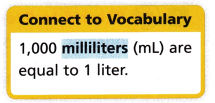
A. Determine the amount of blue paint ordered.

100 bottles × 59 milliliters each = __________ milliliters
Answer:
1 bottle is equal to 59 milliliters.
To calculate for 100 bottles we need to multiply 100 with 59 the product is equal to 5,900 milliliters.
100 bottles × 59 milliliters each = 5,900 milliliters
The amount of blue paint ordered by Mr. Li is 5,900 milliliters.
B. Make a table to compare measurements.

Answer:

Mr. Li also orders five l-liter bottles of green paint.
Five liters of green paint is equal to 5,000 milliliters as we can observe in the above table.
The amount of green paint ordered by Mr. Li is 5,000 milliliters.
C. Write < or > to compare the measurements.
_________ milliliters ![]() ___________ milliliters
___________ milliliters
Answer:
5,900 milliliters ![]() 5,000 milliliters
5,000 milliliters
D. There is more __________ paint in Mr. Li’s order.
Answer:
There is more blue paint in Mr. Li’s order.
Check Understanding
Question 1.
An eraser has a mass of 4 grams. How does the mass of the eraser compare to a token with a mass of 4,000 milligrams? Explain how you know your answer is correct.
Answer:
An eraser has a mass of 4 grams.
We know that 1 gram is equal to 1,000 milligrams.
To convert 4 grams into milligrams we need to multiply 4 with 1,000 the product is equal to 4,000 milligrams.
4 gm = 4 x 1,000 = 4,000 mg
So, the mass of the eraser is equal to the token with a mass of 4,000 milligrams.
Compare. Use >, <, or =.
Question 2.
5 liters ![]() 500 milliliters
500 milliliters
Answer:
5 liters ![]() 500 milliliters
500 milliliters
Explanation:
We know that 1 liter is equal to 1,000 milliliters.
To convert 5 liters into milliliters we need to multiply 5 with 1,000 the product is equal to 5,000 milliliters.
5 liters = 5 x 1,000 = 5,000 milliliters
So, 5 liters is greater than 500 milliliters.
Question 3.
7 grams ![]() 10,000 milligrams
10,000 milligrams
Answer:
7 grams ![]() 10,000 milligrams
10,000 milligrams
Explanation:
We know that 1 gram is equal to 1,000 milligrams.
To convert 7 grams into milligrams we need to multiply 7 with 1,000 the product is equal to 7,000 milligrams.
7 grams = 7 x 1,000 = 7,000 milligrams
So, 7 grams is less than 10,000 milligrams.
On Your Own
Question 4.
Attend to Precision Ivan’s puppy has a mass of 2 kilograms. In two weeks, he gains 12 grams. What is the puppy’s new mass in grams?
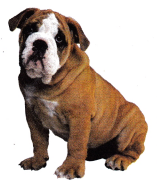
Answer:
Ivan’s puppy has a mass of 2 kilograms. We know that 1 kilogram is equal to 1,000 grams.
To convert 2 kilograms into grams we need to multiply 2 with 1,000 the product is equal to 2,000 grams.
2 kg = 2 x 1,000 = 2,000 gm
Ivan’s puppy has a mass of 2,000 grams. In two weeks, he gains 12 grams.
Add 2,000 grams with 12 grams the sum is equal to 2,012 grams.
2,000 + 12 = 2,012 grams
The puppy’s new mass is 2,012 grams.
Complete.
Question 5.
9 grams = _________ milligrams
Answer:
9 grams = 9,000 milligrams
Explanation:
We know that 1 gram is equal to 1,000 milligrams.
To convert 9 grams into milligrams we need to multiply 9 with 1,000 the product is equal to 9,000 milligrams.
9 grams = 9 x 1,000 = 9,000 milligrams
Question 6.
5 liters = _________ millimeters
Answer:
5 liters = 5,000 millimeters
Explanation:
We know that 1 liter is equal to 1,000 milliliters.
To convert 5 liters into milliliters we need to multiply 5 with 1,000 the product is equal to 5,000 milliliters.
5 liters = 5 x 1,000 = 5,000 milliliters
Question 7.
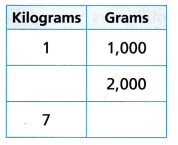
Answer:

Explanation:
1 kilogram is equal to 1,000 grams.
1 kg = 1,000 gm
? kg = 2,000 gm
(2,000 x 1)/1,000 = 2 kg
So, 2 kg is equal to 2,000 grams
1 kg = 1,000 gm
7 kg = ? gm
(1,000 x 7)/ 1 = 7,000 gm
So, 7 kilograms is equal to 7,000 grams.
Question 8.
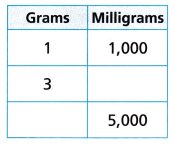
Answer:

Explanation
1 gram is equal to 1,000 milligrams.
1 gm = 1,000 mg
3 gm = ? mg
(1,000 x 3)/ 1 = 3,000 mg
So, 3 grams is equal to 3,000 milligrams.
1 gm = 1,000 mg
? gm = 5,000 mg
(5,000 x 1)/1,000 = 5 gm
So, 5 grams is equal to 5,000 milligrams
Question 9.
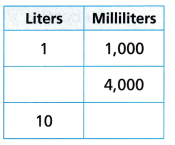
Answer:

Explanation:
1 liter is equal to 1,000 milliliters.
1 liter = 1,000 milliliters
? liter = 4,000 milliliters
(4,000 x 1)/1,000 = 4 liters
So, 4 liters is equal to 4,000 milliliters.
1 liter = 1,000 milliliters
10 liters = ? milliliters
(1,000 x 10)/ 1 = 10,000 milliliters
So, 10 liters is equal to 10,000 milliliters.
Compare. Use >, <, or =.
Question 10.
8 liters ![]() 8,000 milliliters
8,000 milliliters
Answer:
8 liters ![]() 8,000 milliliters
8,000 milliliters
Explanation:
We know that 1 liter is equal to 1,000 milliliters.
To convert 8 liters into milliliters we need to multiply 8 with 1,000 the product is equal to 8,000 milliliters.
8 liters = 8 x 1,000 = 8,000 milliliters
So, 8 liters is equal to 8,000 milliliters.
Question 11.
11 grams ![]() 12,000 milligrams
12,000 milligrams
Answer:
11 grams ![]() 12,000 milligrams
12,000 milligrams
Explanation:
We know that 1 gram is equal to 1,000 milligrams.
To convert 11 grams into milligrams we need to multiply 11 with 1,000 the product is equal to 11,000 milligrams.
11 grams = 11 x 1,000 = 11,000 milligrams
So, 11 grams is less than 12,000 milligrams.
Question 12.
5,700 milliliters ![]() 5 liters
5 liters
Answer:
5,700 milliliters ![]() 5 liters
5 liters
Explanation:
We know that 1 liter is equal to 1,000 milliliters.
To convert 5 liters into milliliters we need to multiply 5 with 1,000 the product is equal to 5,000 milliliters.
5 liters = 5 x 1,000 = 5,000 milliliters
So, 5,700 milliliters is greater than 5 liters.
Question 13.
700 grams ![]() 7 kilograms
7 kilograms
Answer:
700 grams ![]() 7 kilograms
7 kilograms
Explanation:
We know that 1 kilogram is equal to 1,000 grams.
To convert 7 kilograms into grams we need to multiply 7 with 1,000 the product is equal to 7,000 grams.
7 kilograms = 7 x 1,000 = 7,000 grams
So, 700 grams is less than 7 kilograms.
Question 14.
STEM Zachary fills beakers with a solution for testing chemicals. Two beakers hold 350 milliliters each, two beakers hold 400 milliliters each, and one beaker holds 500 milliliters. Zachary claims he has 2 liters of solution to use for testing. Is he correct? Explain your answer.
Answer:
Yes, Zachary is correct, because he has 2 liters of solution to use for testing.
Explanation:
Zachary fills beakers with a solution for testing chemicals. Two beakers hold 350 milliliters each.
350 + 350 = 700 ml
Two beakers hold 400 milliliters each.
400 + 400 = 800 ml
One beaker holds 500 milliliters.
700 + 800 + 500 = 2,000 ml
We know that 1 liter is equal to 1,000 milliliters.
So, 2 liters is equal to 2,000 milliliters.
So, he has 2 liters of solution to use for testing.
I’m in a Learning Mindset!
How did I use feedback my teacher gave me?
Answer: